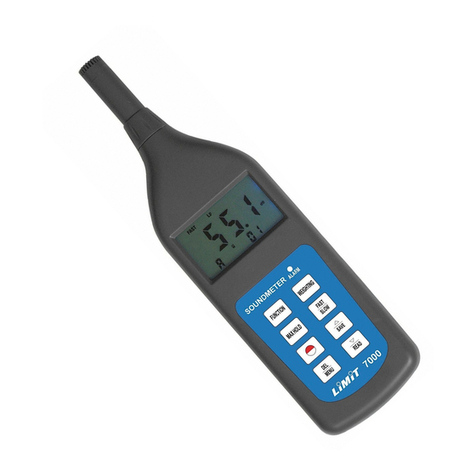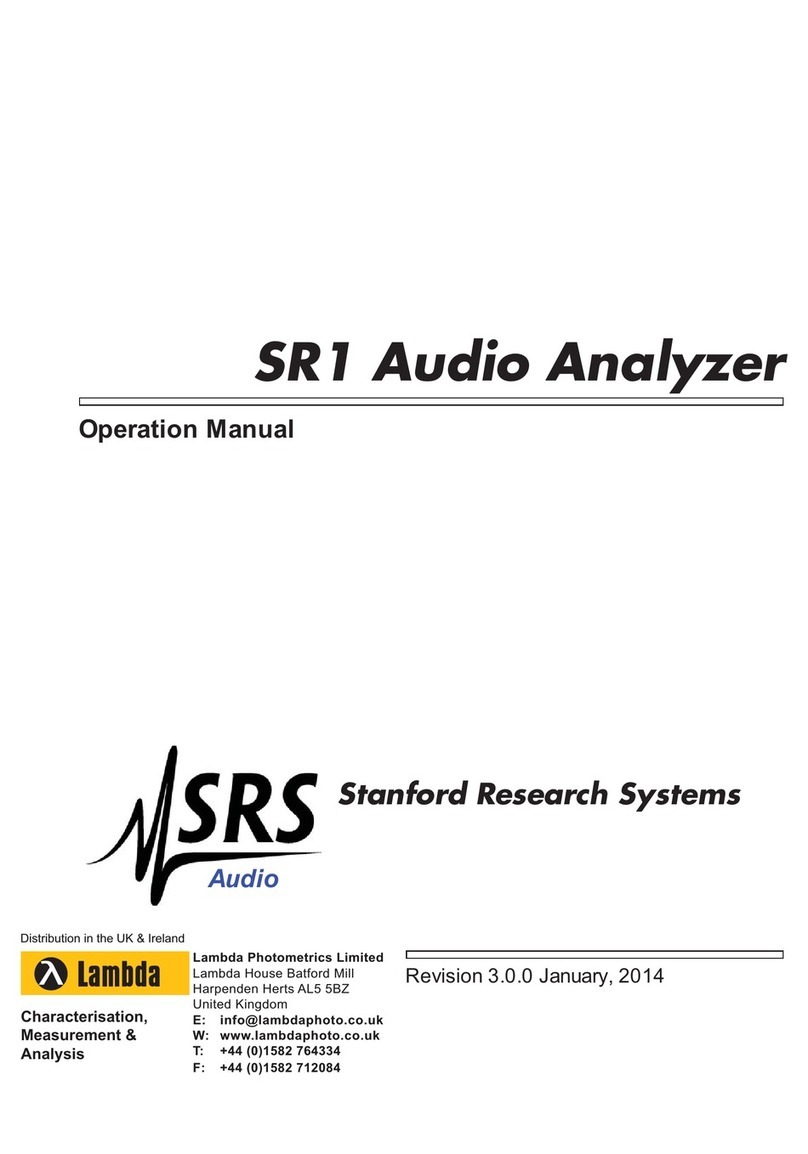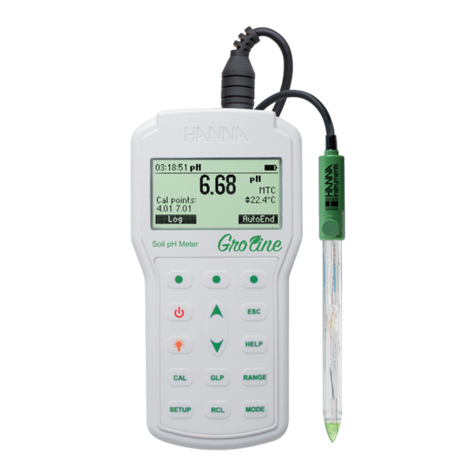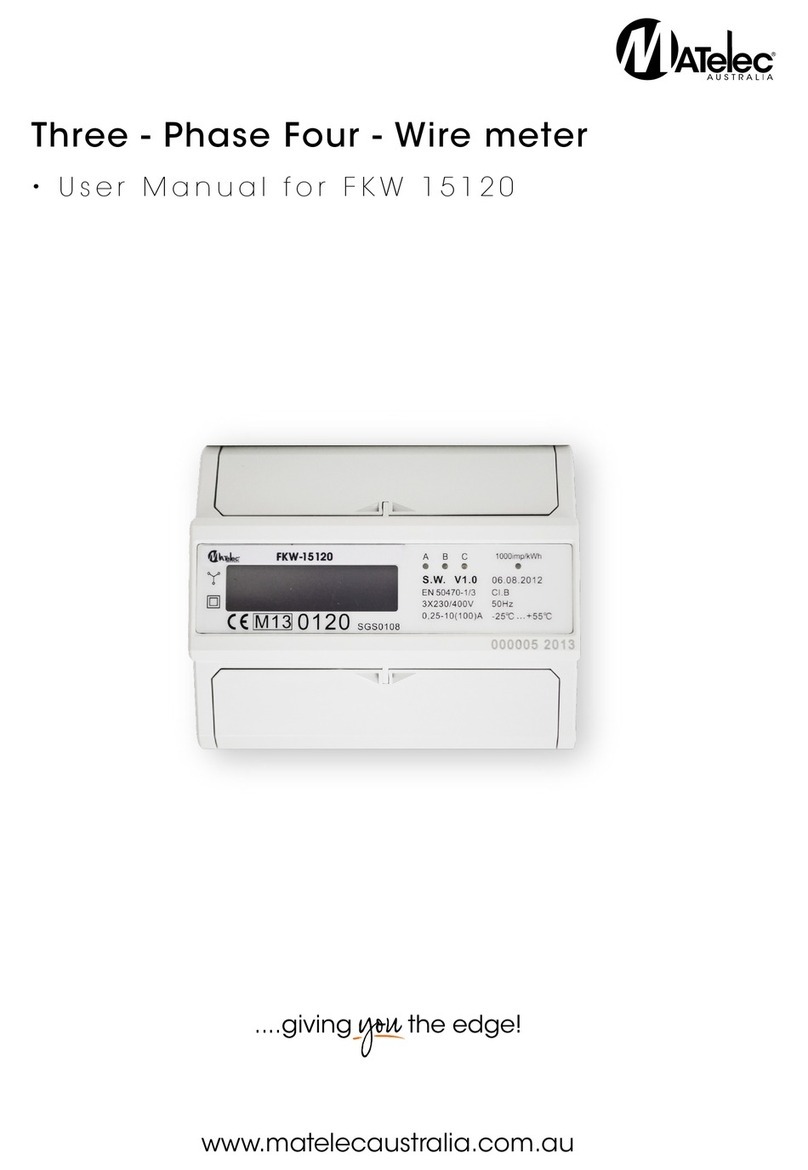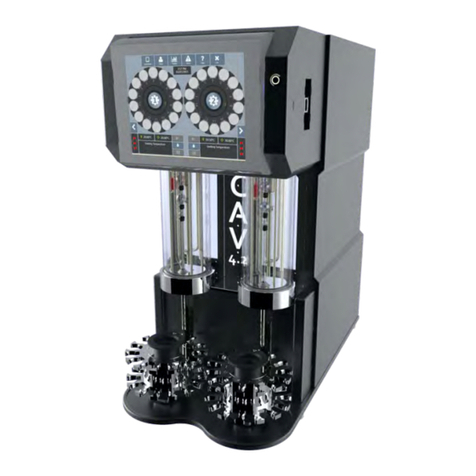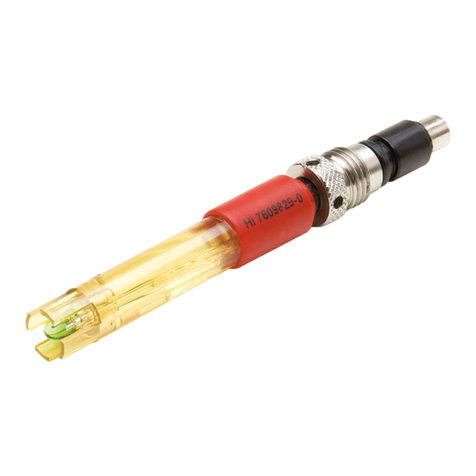Flex Scada Flexs Q5 User manual

U S E R G U I D E
F l e x s Q 5 / Q 5 P r o
R e v : 3 . 2 L a s t U p d a t e d : 2 0 1 9 / 0 1 / 2 1
A D V A N C E D R E M O T E S I T E M O N I T O R I N G

C O N T A C T
T A B L E O F C O N T E N T S
+1 877.352.7398
www.flexscada.com
P.O. Box 277
Lytton, B.C. V0K 1Z0
Canada
Can't find what you're looking for?
We love hearing from our customers!
Please contact us with any questions.
G O T Q U E S T I O N S ?
Section 1.0: Hardware Specifications
Section 1.1: What's included
Section 1.2: Getting Started
Section 1.3: Web Interface Overview
Section 1.4: Main Menu
Section 1.5: Visualization Menu
Section 1.6: Input Graphing
Section 1.7: Input Oscilloscope
Section 1.8: Device Options Page
Section 1.9: Ping Probes Page
Section 1.10: Network Page
Section 2.0: Analog Inputs
Section 2.1: Voltage Inputs
Section 2.2: Current Inputs
Section 2.3: 1-wire sensors
Section 2.5: AC Power Metrics
Section 3.0: Relay Configuration
Section 4.0: Scripting
Section 5.0: SNMP
Section 6.0: Device Firmware Updater
Section 7.0: Device Interface
Section 8.0: Expansion Interfaces
Section 9.0: Warranty Terms
C O N T E N T S
G L O S S A R Y
1-wire/one-wire - a sensor protocol developed by Dallas Semiconductors
A - Amps (Unit of Current)
AC - Alternating Current
AVG - Average
Bit - The smallest possible amount of data: 0 or 1
Bool or Boolean - true or false, usually represented with a single bit
Byte - 8 bits
CH - Channel
CT - Current Transformer
DC or VDC - Direct Current
DFU - Define Firmware Updater
DHCP - Dynamic Host Configuration Protocol
DNS/NS - Domain Name Service (server that converts names to IPs)
FET - MOSFET (Type of semiconductor switch)
FW - Firmware
Floating Point - Any non-whole number
HTTP - HyperText Transfer Protocol
HTTPS - Secure HyperText Transfer Protocol
HVD - High Voltage Disconnect
HW - Hardware
Hz - Hertz (Cycles per second)
I2C - Communication protocol
INS - Instantaneous Value
IP - Internet Protocol v4
IPv6 - Internet Protocol v6
IoT - Internet of Things
JSON - JavaScript Object Notation
kSPS - Thousand Samples Per Second
LAT/LNG - GPS Latitude/Longitude (Decimal Degrees Format)
LTE - 4G Cellular Service
LVD - Low Voltage Disconnect
MAC - Media Access Control
mA - Milliamps (1000th of an Amp)
mJ - Megajoules
MODBUS - Communication protocol used for Industrial PLC's
Mbps - Megabits Per Second
Ohms - Unit of Impedance
PF - Power Factor
PING or IMCP - Internet Control Message Protocol
PoE - Power Over Ethernet
RMS - Root Mean Square
SLAAC - IPv6 Stateless Address Autoconfiguration
SNMP - Simple Network Management Protocol
SW - Switch
Subnet/Netmask/NM - Refer to Internet Protocol
TCP - Transmission Control Protocol
THD - Total Harmonic Distortion
TX - Transmit
Typ - Typical
UART - TTL Level Serial
UID - Unique Identifier
V - Volts
VDC - Volts DC
VT - Voltage Transformer
W - Watt (Unit of Power)

1 . 0 - H a r d w a r e S p e c i f i c a t i o n s
P O W E R R E Q U I R E M E N T S
A N A L O G I N P U T S
L O A D S W I T C H E S
P H Y S I C A L
Dimensions: 157 mm x 108 mm x 40 mm (Mounting Holes: 96 mm x 144 mm - 4 x 3mm)
Also mount with standard DIN Rail - Recommended DIN Rail space: 120 mm
Temperature Rating: –40 to 85°C (industrial rated components)
Environment: Max 95% relative humidity, non-condensing ( ETSI300-019-1.4 Standard )
Weight: 200g
Voltage: 9 - 60 VDC (reverse polarity protected)
Power Consumption: 0.6 W @ 12V Typical (varies based on configuration)
R E G U L A T E D O U T P U T S
Analog Conversion: 24 bit; 0.05 mV @ ±60 V range; 0.004 mV precision @ ±5 V range
Voltage Range: ±60 V (fully differential, bi-polar) (0.5 MΩ. Imp)
Current Range: 0 - 25 mA (requires hardware jumper change)
Max Voltage: 60 VDC
Max Current: 8 A Max Cont (100 A Surge <1 ms) (50% derating above 50° C)
Switch Type: Isolated solid state N-Channel FET /w fly-back protection
Fusing: ATO blade style fuse (replace only with fuses rated for correct voltage range)
Software Fuse: 500 mA to 5 A ***PRO ONLY***
Current Sensing: 0 to 5 A ***PRO ONLY***
LTE SPECS ***LTE VERSION ONLY***
5.0 V output: 500 mA Max
3.3 V output: 500 mA Max (Typ 3.47V)
3.3 V Output /w LTE Module: 150 mA Max (Typ 3.47V)
E T H E R N E T
10/100 Mbps Operation
Long-Range 300 Meter at 10 Mbps
IEEE 802.3az Energy Efficient Ethernet
±15 kV IEC 61000-4-2 Level 4 ESD Protection
IEEE 802.3 Auto-Negotiation
IPv4: DHCP, Static; IPv6: SLAAC, DHCPv6, Static
Passive PoE: Pins 4, 5+; 7, 8- @ 9 to 56V
LTE CAT–M1/NB–IoT 3GPP release 13 LTE Adv. Pro
SMA Connector: SMA-Female
LTE Bands: 2, 3, 4, 5, 8, 12, 13, 20, 28
Modem: ublox SARA-R410M-02B
Certified by: FCC, ISED, PTCRB, NCC, RCM, RED,
AT&T, Telus, Telstra, Verizon, GITEKI 2

1 . 1 - W h a t ' s I n c l u d e d
1.2 - Getting Started
1 x Flexs Q5
1 x DIN Rail Mounting Kit
1 x Product Manual
Once power is connected, the Q5 display will illuminate indicating that the Q5 has successfully started.
The Q5 will then search for a router on the network to get an IP address. If the Q5 fails to find a router within the first 10s
of bootup, it will fallback to standalone mode. In standalone mode, the Q5 will use the fallback IP (default 192.168.1.20).
Using Chrome, Firefox or Safari enter the device IP in the address bar to load the Q5's web interface.
The default password for the device is "flexscada".
Network Connected Mode Standalone Mode
Connect using the following addresses:
http://192.168.1.20 OR with IPv6
http://[fe80::744]
Connect using the IP assigned by your network.
This IP can be found on the Q5 display
(highlighted in red above)
This section provides a brief overview on how to connect to a FlexsQ5 for the first time.
Attach the Q5 to a power source (9 to 60 VDC) using the two pin power terminal located beside the Ethernet port.
The Q5 can alternatively be powered via POE over the Ethernet port.
DC Power
Supply
DO NOT POWER THIS DEVICE DIRECTLY FROM AN AC POWER SOURCE! DOING SO WILL VOID YOUR WARRANTY!
AC Power
Q5 Power Input
AC Power
24 V PoE
PC Ethernet Q5 Ethernet
Powering with a Passive PoEPowering with a DC Power Supply Powering with a Battery
Q5 Power Input
9 - 60 V Battery
IT IS HIGHLY RECOMMENDED TO CHANGE THIS PASSWORD WITH A SECURE PASSWORD TO AVOID
UNAUTHORIZED ACCESS TO THE DEVICE.

1 . 3 W e b I n t e r f a c e O v e r v i e w
Main Menu
(see sec. 1.4)
Configured
Analog Inputs
(see sec. 2.0)
Adopted 1-
Wire Temp
Sensors
(see sec. 2.1)
Computed
Power Metrics
(see sec. 2.5)
Visualization Menu
(see sec. 1.5)
Load Control
(see sec. 3.0)
Registers set from
custom scripting
(see sec. 4.0)
Ping Watchdog
Status (see sec. 1.9)

1 . 4 - M a i n M e n u
Dashboard Page
(see sec. 1.3)
Expert Mode - Disabled Expert Mode - Enabled
Device Options Page
(see sec. 1.8)
Analog Inputs Page
(see sec. 2.0)
Load Outputs Page
(see sec. 3.0)
1-Wire Sensors Page
(see sec. 2.3)
Networking Page
(see sec. 1.10)
Expert Mode (enabled)
Expert Mode (disabled)
Logout
Save and apply settings
(without confirm option)
Safely Apply Settings
(user must confirm after saving.)
Ping Watchdog Page
(see sec. 1.9)
System Log Page
Unique Device ID (UID)
Firmware Version
Hardware Type
Calculated Power Metrics
(see sec. 2.5)
Custom Feeds (see sec. 4.0)
Custom Scripts (see sec. 4.0)

1 . 5 - V i s u a l i s a t i o n M e n u
Data Update Interval
Pause/Start Data Collection
Clear Graph Of All Data
Select Data Metrics to Graph
1 . 6 - I n p u t G r a p h i n g P a g e
The graphing tool is used to view short
term trends, such as current or voltage
readings. The Update Interval range
can be configured from 100ms to 1
minute.
Dashboard Page (see sec. 1.3)
Input Graphing Page (see sec. 1.6)
Input Oscilloscope Page (see sec. 1.7)
Advanced Device Info
Data Update Interval
Load Distribution (PRO ONLY)
View Load Watts (PRO ONLY)
Manually Zero Load Sensors (PRO ONLY)

1 . 7 - I n p u t O s c i l l o s c o p e P a g e
Sample Data and
Regenerate Graph
Select Data Channels
to Display
The oscilloscope tool provides a close-up look at how "clean" your power source is.
When the refresh button is clicked, 2,000 simultaneous readings are taken across all 8 channels and then displayed
in the web interface. The sample rate of the Q5 is 8,000 samples/second (i.e. 8 samples taken each millisecond).

1 . 8 - D e v i c e O p t i o n s P a g e
Device Name and
Description are displayed
in the cloud platform.
These are useful when
searching for a device.
Tags are used in the
filtering of graph data
in Grafana.
Coordinates will autofill
when a GPS module is
attached.
Event logging level.
Transmit measurements
to cloud at this interval.
Also used for avg, min
and max values on the
dashboard.
Sync configuration
data with cloud at this
interval.
Default address -
change this only when
running customer
hosted cloud software.
EDIT CONFIG FILE allows the advanced
feature of editing the actual JSON
config file. This is only recommended
for expert users.
If enabled Q5 will check
cloud for available
updates at boot. See
Section 6.0.
UPDATE FIRMWARE allows you to
manually enter the Device Firmware
Updater (DFU) to manually update the
device firmware. More on this in
section 6.0.

1 . 9 - P i n g P r o b e s P a g e
Ping Probe Label.
Ping Timeout
Perform an action if
destination is
unreachable
Ping this Host
1 . 1 0 - N e t w o r k P a g e
If the network mode is set to DHCP, the device will
request an IP from a DHCP server on the network.
Should the Q5 fail to get an IP it will fall back to the
IP configuration entered here. The same applies to
IPv6. The FlexesQ5 supports both IPv4 and IPv6 at
the same time.
Additionally, this page includes options for enabling
and disabling SNMP, Modbus TCP and modifying
the SSL Certificate.
Status of a probe as found on the
dashboard.
Select a relay to run
action on (optional).
See Section 5.0 SNMP

2 . 0 - A n a l o g I n p u t s
There are several types of inputs, each of which can be roughly categorized as
Analog, Frequency, Pulse Counter and Alarm Contacts. This section provides
greater detail on how to use and configure each of these input types.
Units shown on dashboard.
When changing between input Channel Modes, you will be alerted
about a required hardware change to the jumpers on the Q5. When
making this change the Q5 must be powered down.
Used for most applications with DC or AC.
Eg. wind speed, RPMs, pulse inputs.
Always up counting. Eg. total gallons.
Eg. Door open, or water detected.
In the Logging / Dashboard section, you must enable the
metrics you wish to be visible on the dashboard or sent to
the cloud for graphing. Some items may be grayed out,
depending on the input configuration chosen. For
example, the State metric is only valid when the
Measurement Type is set to Alarm Contact.
For min, max and average time period see Section 1.8 -
Measurement Interval.
See section 2.4 for more details on
measurement types.
The Q5 hardware has been designed to accept a wide range of inputs.
To insure proper operation, it is important to select the correct Channel
Mode and corresponding hardware configuration.
Voltage Mode accepts a wide voltage range (±60V AC/DC) and can be
used for a number of functions (alarm contacts, battery voltages, 0-5V
sensors, AC Power Metrics, etc). See sec 2.1 for examples
Current Mode is used for current based sensors, such as 4-20mA sensors
and current transformers. See sec 2.2 for examples.
Extra low Voltage Mode is used where high accuracy in a very low voltage
range is required. The max voltage range for this mode is ±2.4V AC/DC.
Enable/Disable this input.
Channel Name (displayed on dashboard).
Channel Description (optional).
These expert
options should
not be changed
unless directed
by FlexSCADA.
FAILURE TO MAKE THIS HARDWARE CONFIGURATION CHANGE BEFORE CONNECTING YOUR INPUT MAY
DAMAGE YOUR DEVICE AND VOID YOUR WARRANTY!

2 . 1 - V o l t a g e I n p u t
Below is an example of a typical 0-10V sensor attached and configured for use with the Q5. When installing, first confirm
that the Q5 is configured in Voltage Mode (see section 2.0 for details on voltage mode). Next, attach the analog output
from your sensor to the + terminal on the Q5 channel (shown in the diagram below).
Navigate to the Analog Inputs menu, select the channel, then select Voltage Mode under Channel Mode. Next select
Analog Value under the Measurement Type drop down (Channel Mode and Measurement Type are highlighted in the
blue box).
Set the sensor range using the specs found on the side of the sensor or in the provided data sheet. In the above
example, 0V corresponds to 0 PSI and 10V corresponds to 100 PSI. Enter the voltage output range of the sensor's
analog output in the green box. If the sensor output was a 0-5V signal level, the values in the green box would be 0
and 5 instead of 0 and 10.
The Multiplier, Offset and Gain are automatically set when using the Input Scaling section.
For higher voltages (up to 300V) the Q5 Voltage Reducer hardware module may be used with the following
configuration. For more details on AC power, refer to section 2.5.
Q5 Voltage Reducer
Module (for voltages
up to 300V RMS).
Q5 Voltage Reducer
Module (installed).
Input Scaling for Q5 Voltage Reducer Module

Current Sensors
Current sensors (not to be confused with current transformers) take a current signal and convert it to an analog voltage
output. FlexSCADA and its resellers can provide a 100 A non-invasive current sensor which can be configured as shown
below.
Sensor Power Requirements: 5 V DC
Max Current: ±100 A
Part No. ACC-AMP-100NI
To double the accuracy and halve
the range the load wire can be
looped through the sensor a
second time. In the above example,
the new max range is ±50 A.
Input Scaling with two loops.
The load wire can be looped
through the sensor as many times
as needed to get the desired scale.
Only the Full Scale field is modified
to reflect this ratio change.
Load wire
shown in
blue.
Load wire
shown in
blue.
Example channel configuration.
The exact values to be entered can be found on
the calibration document included with the
current sensor.
Example calibration report included with each current sensor.
1:1 ratio
Scale Ratio

2 . 2 - C u r r e n t I n p u t s
The 4 - 20 mA sensor is the de facto industry standard. This section details how to configure the Q5 to accept
this type of input. As the Q5 does not power current loops, external power will need to be provided in order for
your current loop to function.
To utilize this feature the hardware jumpers must be configured in Current Mode (see section 2.0). Next,
configure the input from the Analog Inputs menu. The Channel Mode and Measurement Type must be configured
as shown below. The configuration example below shows a 4 - 20 mA sensor with a range of 0 - 150 PSI. The
sensor range for the specific sensor must be entered as shown in the red boxes.
Hardware configuration example for a 4 - 20 mA sensor.
Current transformers can also be used
with the Q5 without the need for
additional conditioning. Current
transformers are connected as shown
above.
Note: Current transformers are not to
be confused with the 100A non-
invasive current sensors sold by
FlexSCADA. The non-invasive current
sensor converts current readings into a
0-5V voltage style reading. See sec 2.1
WARNING! EXCEEDING THE CURRENT RATINGS OF THE Q5 WILL DAMAGE YOUR DEVICE AND VOID THE WARRANTY!

2 . 3 - 1 - W i r e S e n s o r s
Once the sensors have been connected, they must be configured. In the web interface, navigate to the Temperature
Sensors menu. Located at the bottom of the page you will see "1 unconfigured sensors found on this device" followed by
the unconfigured sensor showing an ADD button (any one-wire sensor can be used in this way).
Alternately, it is possible to pre-add the sensors using the ID found on the sensors sold by FlexSCADA and its re-
sellers. All one-wire sensors will have a unique ID. FlexSCADA one-wire sensors have been labeled with this pre-
existing ID for ease of use.
The Q5 supports 1-wire sensors. The below diagram shows how to connect and provide a 1-wire sensor with power
and data communication. The Q5 supports up to 64 sensors, each sharing the same 3 wires.
Adopt unconfigured
temp sensor.
Manually add temp sensor.
(Sensor ID found on sensor
wire shown right.)
The below example shows a newly added temp sensor, along with the options to name the sensor and choose which
metrics to log or add to the dashboard.
The display units can be modified in the
Device Options menu.
Show/Hide sensor options.
ID of the sensor, this can be updated
if a sensor needs to be replaced.
Sensor Label - this label is used on the
dashboard and in the graphing.
Detailed sensor description. (optional)
Select what metrics you wish to graph or
display on the dashboard. For min, max
and average time period see Section 1.8 -
Measurement Interval.
Tags help in selecting datasets when graphing. An example might be "greenhouse 1"
allowing an easy way to select sensors belonging to that greenhouse.
Delete this sensor.
New temp sensor displayed
on the dashboard.
To attach additional one-wire sensors a standard wiring
bus will be required, as the terminals are not physically
capable of holding more than a few sensors.
Each one-wire sensors has a unique digital ID that makes
it possible to view its value without interfering with the
other sensors.

2 . 4 - U n d e r s t a n d i n g M e a s u r e m e n t T y p e s
Not all measurements utilize an analog value. This section details the various Measurement Types supported by the
Q5.
Each channel provides the following Measurement Type's option:
For additional information on
the Analog Value option
and Input Scaling calculator
refer to sections 2.1 and 2.2.
Both Frequency and Pulse Counter require a threshold to recognize when a valid
signal has been detected. This is known as the Pulse Detection Threshold. To
avoid counting the same rising edge twice, the signal must exceed 20% of the
Pulse Detection Threshold in order to be considered a valid pulse (see graphic
below).
Pulse Detection Threshold
20% Over Threshold
Frequency is the number of valid pulses per second or hertz (Hz).
Alternately, Power Metrics can be used to find the frequency of an input (see
section 2.5 for more information).
Pulse Counter is a total count of all pulses since the Q5 has booted.
Pulse Multiplier is used to adjust sensor readouts. For example, the spec sheet
for an anemometer reads as follows: Output Frequency: 1,1 HZ / m/s. But we
want the sensor to read out the exact m/s on our graphs. The multiplier could
be set to 1 / 1.1 = 0.909 multiplier.
In another example a flow sensor reads 450 output pulses/liter. The multiplier
could adjust the output to read in liters/minute. We are looking at Hz (pulses
per second) so we need to divide by 60 seconds. 450 / 60 = 1 liter per 7.5
pules/s = 1 (liter) / 7.5 (pulses) = 0.133333 multiplier.
Alarm under threshold.
Send update to cloud
when alarm is triggered.
Threshold over or under
which to trigger alarm.

2 . 5 - P o w e r M e t r i c s
The Power Metrics menu provides the ability to calculate a number of power related metrics for both DC and AC
power. With AC power it is possible to calculate watts, amps, volts, power factor, apparent power, frequency and
Total Harmonic Distortion (THD). With DC the main use for power metrics is for calculating wattage.
Expert options for AC metrics.
Instantaneous, Average, Minimum
and Maximum can be selected for
graphing or logging of each available
metric. For min, max and average
time period see Section 1.8 -
Measurement Interval.
Metric Label
Detailed sensor description (optional).
Calculated Real Power
Power Metrics as displayed
on the dashboard.
Select AC or DC mode
See sec 2.0 for
more details on
source channels.
Calculated as Volts x Amps
Calculated Voltage
Total Harmonic Distortion
Calculated Amperage
Calculated AC Frequency
Ratio of Real Power to Apparent Power

3 . 0 - R e l a y C o n f i g u r a t i o n
Both the Q5 and Q5 Pro include 8 solid state load relays capable of switching up to 10A DC (Max
100W). The pro version includes internal current sensing on all 8 relays capable of accurately measuring loads up to
5 Amps DC.
ATO Style Fuse
(PRO ONLY)
Polarity must
be correct, or
load will not
turn off.
Load switch only,
circuit must be
powered.
Load Relay as found on the dashboard
Load Name
Default state after Q5 is rebooted
Digital Fusing
(PRO ONLY)
Eg Battery voltage powering this device,
required for Low/High Voltage Disconnect.
Load Current
(PRO ONLY)
Load Voltage is
required to calculate
wattage (PRO ONLY).
Toggle State for
10 seconds
Toggle State
Reset Low/High Voltage
Disconnect or Digital
Fusing (PRO ONLY)
Low and High Voltage Disconnect serve
the same purpose; protecting the load
from damage in the event of extreme
power fluctuations.
Choose the metrics to be logged or
displayed on the dashboard. LVD, HVD and
Load Power require Load Voltage to be
provided. Load Amperage, Load Power and
Digital Fusing are available with the Q5 Pro
only.

3 . 1 - R e l a y S p e c i f i c a t i o n s
The Q5 Relays are subject to environmental de-rating as detailed below.
-45 to 40° C
41 to 55° C
55 to 100° C
8 Amps
6 Amps
4 Amps
2 Amps
0 Amps
100 mS
10 S
30 S
50 Amps
40 Amps
30 Amps
20 Amps
10 Amps
0 Amps
Max on time in 1 minutes period.
Red - under 30 Volts.
Blue - 30 to 60 Volts.
Switch Impedance: 8 mOhms (Not including fuse)
Max Open Voltage: 70 VDC
Power Consumption: 2 mW in closed state
Isolation Level: +/- 125 V (Channel to Channel or
Channel to Q5 Ground)
Max Surge Rating: 250 A transient pulsed; tp ≤ 10 µs
Max Current Sensing: 5 A (PRO ONLY)
Contains fly-back suppression for switching inductive
loads such as relays, motors, etc.(up to 140 mJ (Max
250 A Peak Current)
Technical Specifications
Switched Load
Power Source
Power Distributor Bus
No. ACC-Q5-DIST15A
For systems using a single voltage we offer a distribution bus to cut down on
the required wiring. When using the distributor each channel acts as a power
source rather than an isolated switch. The max combined load across all
channels must not exceed 15 A. No software configuration is required for this
hardware accessory.

4 . 0 - S c r i p t i n g
Status of custom feed as
displayed on the dashboard.
The FlexsQ5 has an on-board scripting language that utilizes JavaScript syntax. This scripting provides access to
all on-board analog inputs, temperature sensors, load outputs, custom feeds and Modbus TCP.
Custom feeds are a location where you can store data generated by your scripts. This data is uploaded to the cloud
server and can also be viewed on the dashboard. Additionally you can access custom feeds from SNMP. See
section 5.0.
Custom feeds can be configured as either a bool (true or false) or as a floating point number (a number with
decimal places). See the on board "Custom Feeds" example for more info on how to write to the custom feeds.
Custom Feed Label
Delete this custom feed.
Warning: Deleting a feed
will increment all other
feeds requiring change to
the scripting.
Add a new custom feed.
Logic menu is where all the action with scripting takes place. Included on this page are a number of helpful
examples (highlighted in blue). Below you will find the syntax highlighted code editor (highlighted in red).
All scripting is managed as a secondary priority to the
main functions of the Q5 (to avoid interruptions to
system tasks). For a more in-depth look at scripting,
please see the on board examples.
Any errors in the scripting will prevent all of the script
from functioning. Details on where the error is located
can be seen at the top of the page upon saving the
settings.
Error shown at top of page,
indicating the line causing the
problem.
The line in your
script causing the
error.
This manual suits for next models
1
Table of contents
Popular Measuring Instrument manuals by other brands
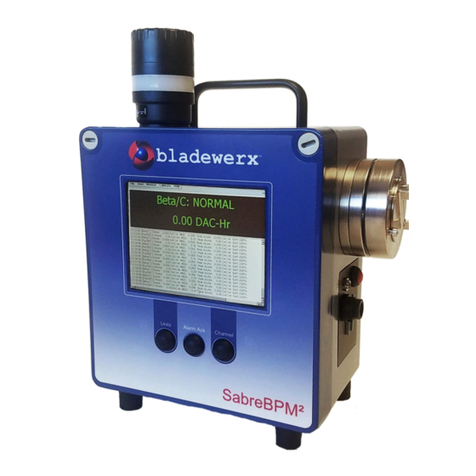
Ludlum Measurements
Ludlum Measurements 334AB Operation manual

IET Labs
IET Labs 1565-E User and service manual

ICS Schneider Messtechnik
ICS Schneider Messtechnik GA35 operating instructions
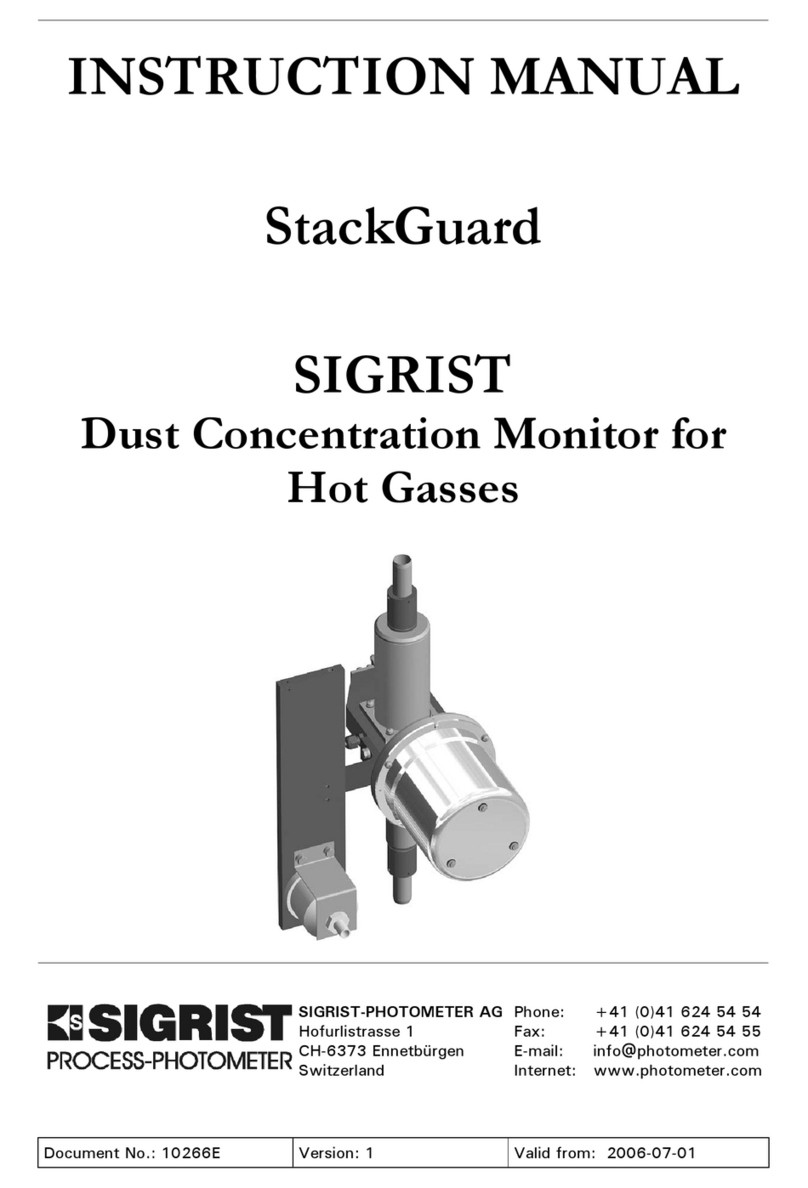
SIGRIST
SIGRIST StackGuard instruction manual
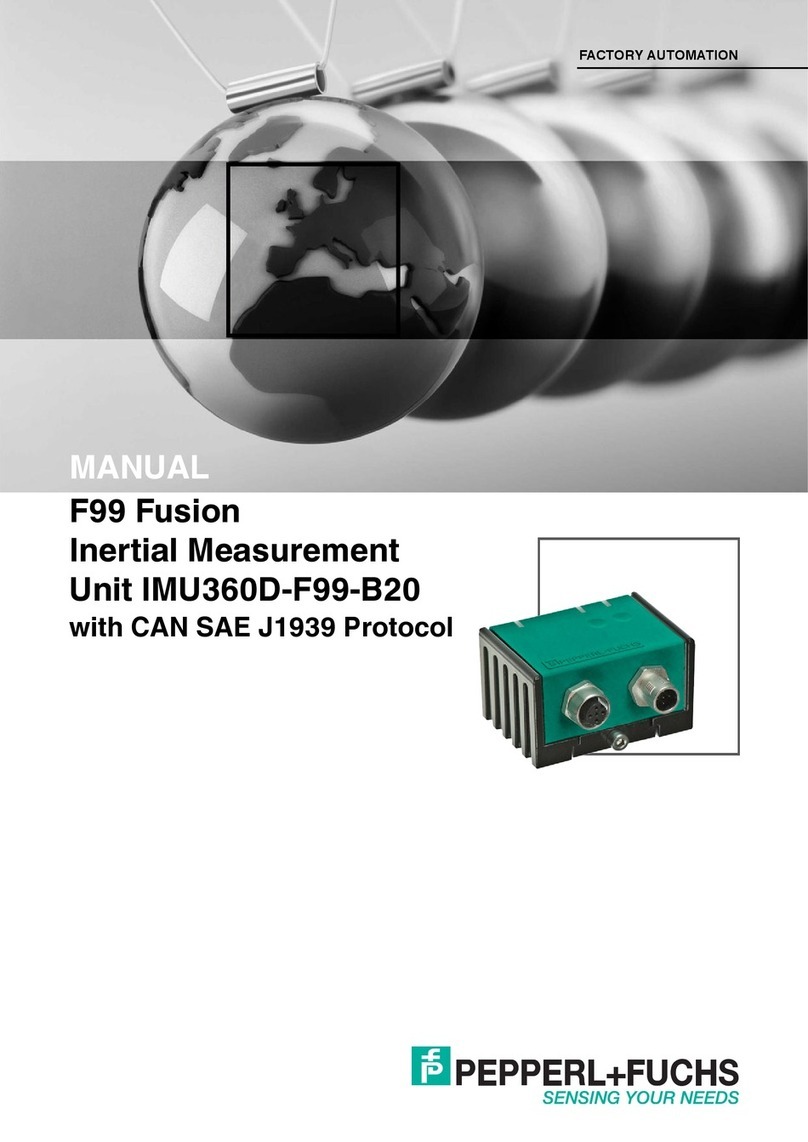
Pepperl+Fuchs
Pepperl+Fuchs IMU360D-F99-B20 manual
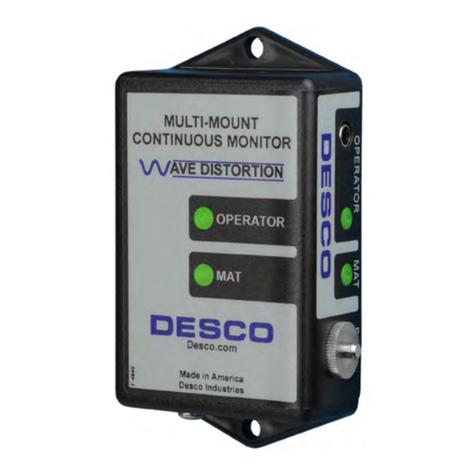
Desco
Desco 19651 Installation, operation and maintenance
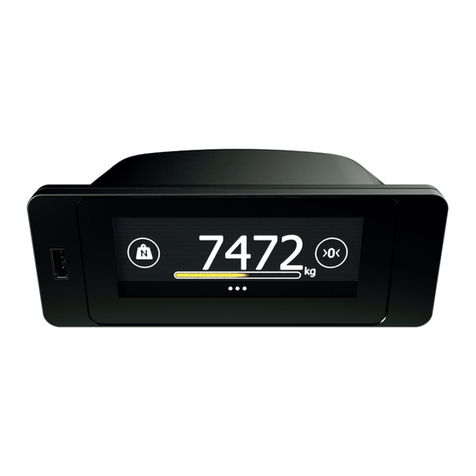
Flintec
Flintec FT-30M Installation and operation manual
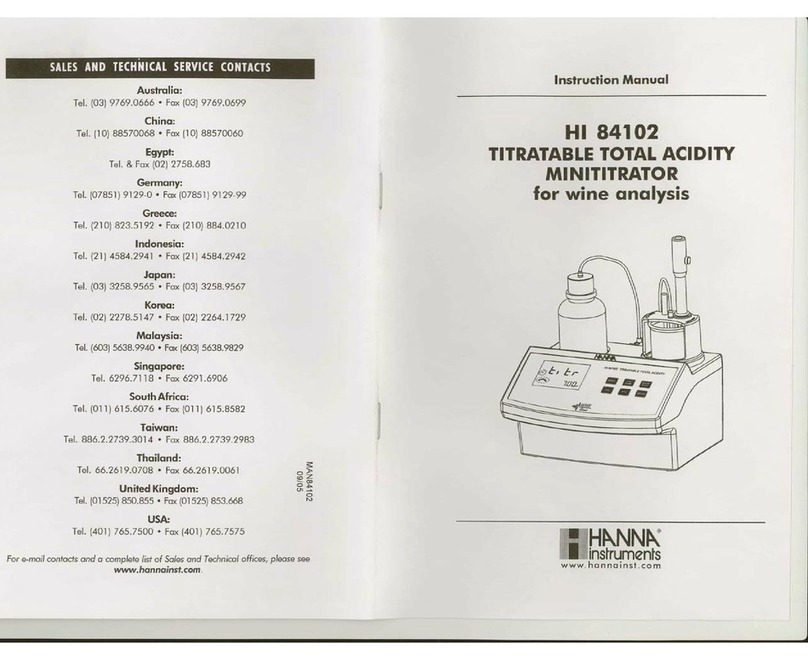
Hanna Instruments
Hanna Instruments HI 84102 instruction manual
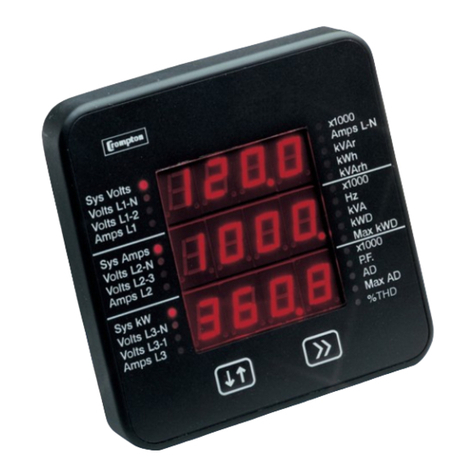
Crompton
Crompton Tyco Electronics SWITCHBOARD INTEGRA 1540 Installation and operating instructions
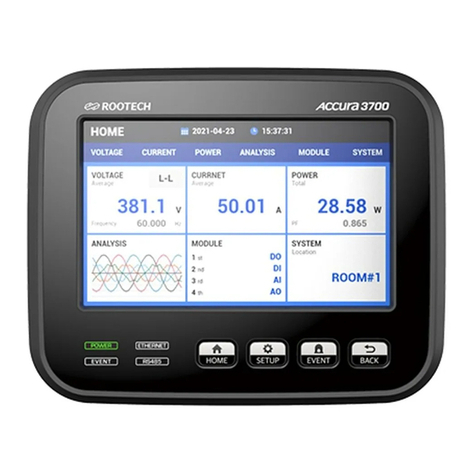
ROOTECH
ROOTECH ACCURA 3700 Series user guide

Fisher Scientific
Fisher Scientific Fisherbrand accumet AB330 user manual

AstroAI
AstroAI 250 PSI manual
